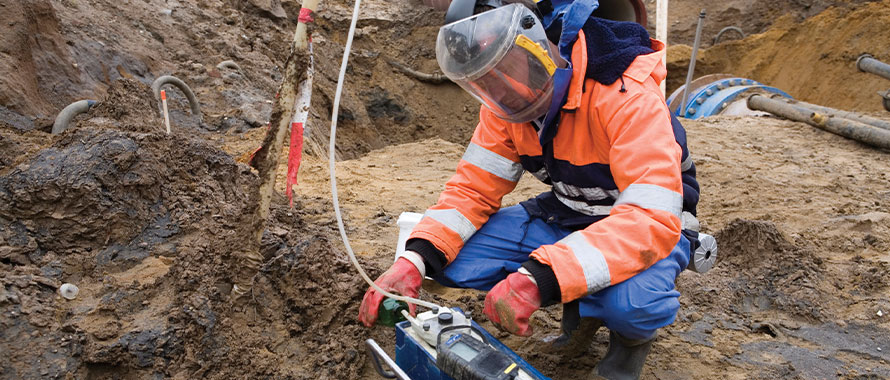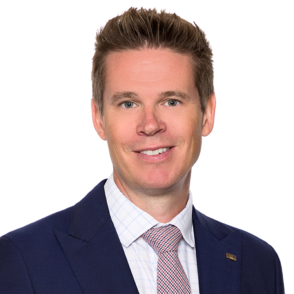The Property & Casualty (P&C) market is in a hard market. Typically, the Environmental Insurance sector operates in the reverse of P&C markets—and that is what we are seeing now. Environmental Insurance is in a soft market.
Key Takeaways:
- Environmental Insurance market remains soft, terms expected to tighten.
- Rates expected to increase by 3-5 percent in 2024.
- Burns & Wilcox can provide access to Excess, relationships with up to 60 Environmental markets.
- PFAs and phthalates trending concerns, with mold still among most common issue to address.
- Insure to the future—not only what the exposure is today but looking ahead to trending contaminants.
While competition for capacity is extensive, we are seeing rates slightly rise. For most clients the U.S., the expectation will be for rates to increase by 3-5 percent in 2024. Some clients, given the much higher increase of insurance rates in other areas, not to mention general inflationary trends, may choose to non-renew or cut back on their Environmental Insurance coverage all together in the new year.
In addition to modest rate increases, terms and conditions continue to tighten with higher deductibles and a pullback on limits. The Canadian market is experiencing rate instability and heated competition, meaning brokers will be expected to ensure competitiveness while adhering to underwriting integrity. In essence, clients are learning that short-term pain may be needed for long-term gain for asset and property protection.
Significant challenges facing Environmental
Many Excess markets are reducing their overall capacity, making it more difficult to find solutions for insurable assets. The good news is that Burns & Wilcox can provide access to these markets, with the ability to fulfill Excess limits. That is possible because of our direct relationships with up to 60 different Environmental markets, presenting new business opportunities for brokers and agents.
There remains a continued prevalence of nuclear verdicts in the Environmental sector. For example, a federal jury this spring awarded more than $135 million to Georgia property owners over a solar company’s perceived pollution as outlined on Law.com.
Perhaps the most significant market challenge facing brokers and agents is how to effectively educate clients on just how much Environmental Insurance coverage they should have in place. Few understand that most clients have an environmental exposure, including those that do not deal with chemicals or hazardous substances. Therefore, Environmental exposure is a relevant concern. Any substance or item outside of its natural environment or in excess is considered a pollutant.
Another common challenge is how to differentiate policies by highlighting client service. One way for brokers and agents to do this is by emphasizing that sound underwriting is used to help uncover solutions. Identifying the value in client service and industry expertise can help to stem the tide of non-renewals.
Industry trends and hot topics
At the top of the hot topics list is the impact of per- and polyfluoroalkyl substances, better known as PFAs. This term refers to a group of synthetic organofluoride chemical compounds that have multiple fluorine atoms attached to an alkyl chain. Simply put, PFAs are human-made chemicals that many scientific experts believe have extremely dangerous health effects on humans.
Also known as forever chemicals, PFAs are present in a seemingly endless array of products from Teflon and fire retardants to winter coats and takeout pizza boxes. The links to reported human health risks include an increased risk of kidney or testicular cancer, changes in liver enzymes, and increased cholesterol and blood pressure levels, according to the Agency for Toxic Substances and Disease Registry. The full impact of PFAs on the insurance industry, and the full extent of client exposure is not known, but some industry experts worry it could mirror the seriousness and volume of asbestos.
Lawsuits have already been filed. For example, the city of Wausau, Wisconsin filed a lawsuit against 15 PFAs manufacturers and 61 major insurance players in early December for what the city claims is contaminated drinking water as a direct result of manufacturing PFAs chemicals.
A similar but less publicized concern is the potential industry impact of phthalates. This refers to a group of chemicals used to make plastics more durable, often called plasticizers. Phthalates are in hundreds of products, such as vinyl flooring, lubricating oils, and such personal-care products as soaps, shampoos, hair sprays.
Some types of phthalates have harmed the reproductive system in animals, according to the Centers for Disease Control and Prevention (CDC). Human health effects from exposure to low levels of phthalates are not as clear and more research is needed to assess the impact of exposure, the CDC adds. Other reports suggest they can cause reproductive issues and cancer. As with PFAs, the level of potential exposure could be significant.
While not “new,” mold remains an issue for many clients, particularly given the increase in remote workers and the large number of commercial office spaces that are sparsely populated or empty. Low occupancy rates make it harder to detect mold and moisture issues that could damage a structure. While commercial buildings are at a high risk of unrecognized structural issues because fewer workers are onsite, residential habitational spaces often face continued mold challenges that untreated can lead to significant exposure.
Tips to help agents and brokers address market challenges
Even with this soft rate environment that includes fierce competition and varying capacity, brokers and agents can follow these tips to help them build business and differentiate themselves from others in the marketplace.
- Build and maintain strong relationships with carriers. Having strong relationships allows for greater access to multi-faceted coverage options.
- Partner with the most qualified experts. Burns & Wilcox professionals provide this high level of expertise and can help further strengthen carrier relationships. Team members are underwriters by trade and can evaluate what options would best suit client needs.
- Educate clients about environmental exposure. Brokers and agents often need to create demand because many clients do not realize the amount of environmental exposure they have. Absence of loss does not mean an absence of risk, and providing clients with examples of financially damaging lawsuits within their industry can go a long way to finding new business opportunities.In addition, clients need to think about their potential exposure in the future, as the concern surrounding contaminants grows. Education from a risk management perspective and insurance coverage standpoint are vital.
- Quality submissions should be complete and full of additional details. Incomplete submissions will be ignored these days, especially given how competitive the Environmental sector is. Brokers and agents should ensure that clients provide extra information over and above what is required in a submission to increase carrier confidence and confirm transparency.
- Sell based on coverage rather than price. Clients making decisions on price alone may be the first ones to forego policy renewal giving the rising costs of other insurance. By providing the best coverage with fewer exclusions and favorable terms and conditions, brokers and agents will help clients better protect their assets.
- Be creative in providing solutions. Creativity often wins in this market, whether it involves multiple carriers or layering certain options. Burns & Wilcox professionals can help find creative options to ensure clients receive the best coverage possible.
- Position your expertise as holistic. Plan to compete and win with all types of industries. Recognize the importance of educating clients so they understand where their liabilities are—even if they do not realize it. Brokers and agents can also build expertise with both highly complex and simplistic solutions.
Contributors: Tyson Peel, Vice President, Director, Commercial Insurance, Burns & Wilcox; Gina Jones, Vice President, Director, Environmental Programs, Burns & Wilcox; Beth Linton, Vice President, Environmental brokerage, Environmental Underwriting Solutions (a division of Burns & Wilcox); Karim Jaroudi, Manager, Environmental, Burns & Wilcox
This commentary is intended to provide a general overview of the issues contained herein and is not intended, nor should it be construed, to provide legal or regulatory advice or guidance. If you have questions or issues of a specific nature, you should consult with your own risk, legal, and compliance teams.







